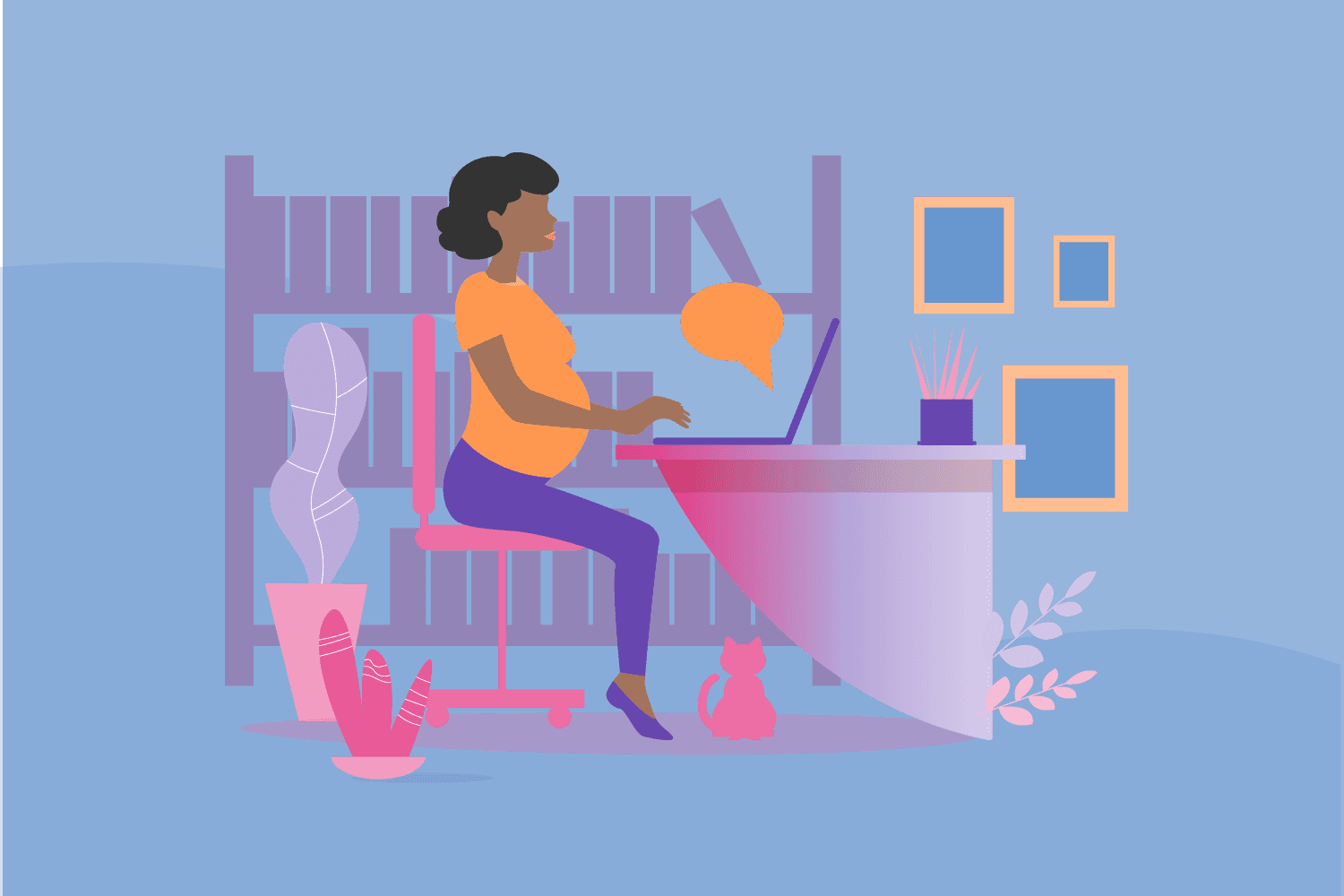What to Expect When You’re Expecting at Work

Being pregnant at work can be a nerve-wracking experience, with pregnant workers having to deal with prickly conversations, pregnancy aches and pains, and so much more.
Here’s what to expect when you’re expecting, and how to make your time before, during and after your maternity leave as stress-free as possible.
Know Your Rights
Pregnant women should be aware of their rights under the law, as well as their company’s specific maternity leave policy, in order to ensure they’re being treated fairly in the workplace. Australia has some of the world’s best policies to take care of working parents and reduce pregnancy discrimination.
According to the Sex Discrimination Act 1984, the Fair Work Act 2009 and other state and territory laws, pregnant employees cannot be treated unfairly due to their pregnancy, which includes being fired, given fewer hours or being overlooked for a promotion because of being pregnant.
Employers also can’t ask you if you are pregnant or have plans to become pregnant before making a hiring decision, and must provide reasonable time off for antenatal appointments.
As well as protecting your rights in the workforce, Australian parental leave policies also include paid and unpaid leave periods to allow you to enjoy your time as a new parent. Bear in mind, however, that your parental leave entitlements will depend on factors such as your award, agreement or contract and how long you have been in the job.
It’s worth having a chat with your Human Resources department to see what you are entitled to, or contacting the Fair Work Ombudsman.
Making Your Pregnancy Announcement
In order to balance your work commitments and prepare for your time off work, it’s important to make your pregnancy announcement in a timely and appropriate manner. While it’s perfectly okay to wait until you are comfortable to have this discussion with your employer, it’s also worth doing it sooner rather than later so that your employer doesn’t find out through office rumours.
Instead, arrange a time to discuss your pregnancy with your employer, and make sure to note all details in writing (including how much leave you wish to take and the starting and finish dates of your leave).
Remember that you must give notice to your employer at least 10 weeks before starting your parental leave.
Working While Pregnant
While you are pregnant, your employer must make reasonable accommodations in line with your health and safety requirements. This includes allowing for frequent bathroom breaks, providing you with a seat, or even moving you into a safe job (at a similar pay and with similar hours) if your current position is deemed unsafe.
From managing morning sickness in your first and second trimesters to dealing with fatigue when you are close to the finish line, here are some ways you can manage your pregnancy smoothly while at work:
In addition to your usual sick leave entitlements which can be used when you are feeling unwell, special maternity leave may also be available during your pregnancy.
This is unpaid leave a pregnant employee can take if she cannot work because of a pregnancy-related illness or if the pregnancy ends within 28 weeks of the expected due date.
Preparing for Your Leave
Before going on maternity leave, make sure to tie up all loose ends at work. Create a list of all your tasks and which coworkers these tasks should be assigned to, or arrange for a smooth handover with your maternity leave replacement.
Also, ensure that you are clear with your employer and coworkers about your keeping in touch preferences. Do you wish to be completely off the grid while at work, looped into certain emails or available for all urgent messages?
It’s also a good idea to assert your career ambitions and commitment to your company in your parental leave plan so that your return to work goes as smoothly as possible.
For example, you may still want to be considered for promotions while on leave so that you can hit the ground running once you’re back. Or you might want to have flexible arrangements in place to assist with your return to work, which are worth flagging right from the get-go.
There are plenty of fantastic templates online for creating your parental leave plan, so make sure to have a look to set yourself up for success!
How to Be a Stay at Home Mum and Study at the Same Time
Studying online courses while being a busy mum can be challenging, but extremely rewarding. Here’s how to do it right.
Learn More



